- News
- Reviews
- Bikes
- Accessories
- Accessories - misc
- Computer mounts
- Bags
- Bar ends
- Bike bags & cases
- Bottle cages
- Bottles
- Cameras
- Car racks
- Child seats
- Computers
- Glasses
- GPS units
- Helmets
- Lights - front
- Lights - rear
- Lights - sets
- Locks
- Mirrors
- Mudguards
- Racks
- Pumps & CO2 inflators
- Puncture kits
- Reflectives
- Smart watches
- Stands and racks
- Trailers
- Clothing
- Components
- Bar tape & grips
- Bottom brackets
- Brake & gear cables
- Brake & STI levers
- Brake pads & spares
- Brakes
- Cassettes & freewheels
- Chains
- Chainsets & chainrings
- Derailleurs - front
- Derailleurs - rear
- Forks
- Gear levers & shifters
- Groupsets
- Handlebars & extensions
- Headsets
- Hubs
- Inner tubes
- Pedals
- Quick releases & skewers
- Saddles
- Seatposts
- Stems
- Wheels
- Tyres
- Health, fitness and nutrition
- Tools and workshop
- Miscellaneous
- Cross country mountain bikes
- Tubeless valves
- Buyers Guides
- Features
- Forum
- Recommends
- Podcast
review
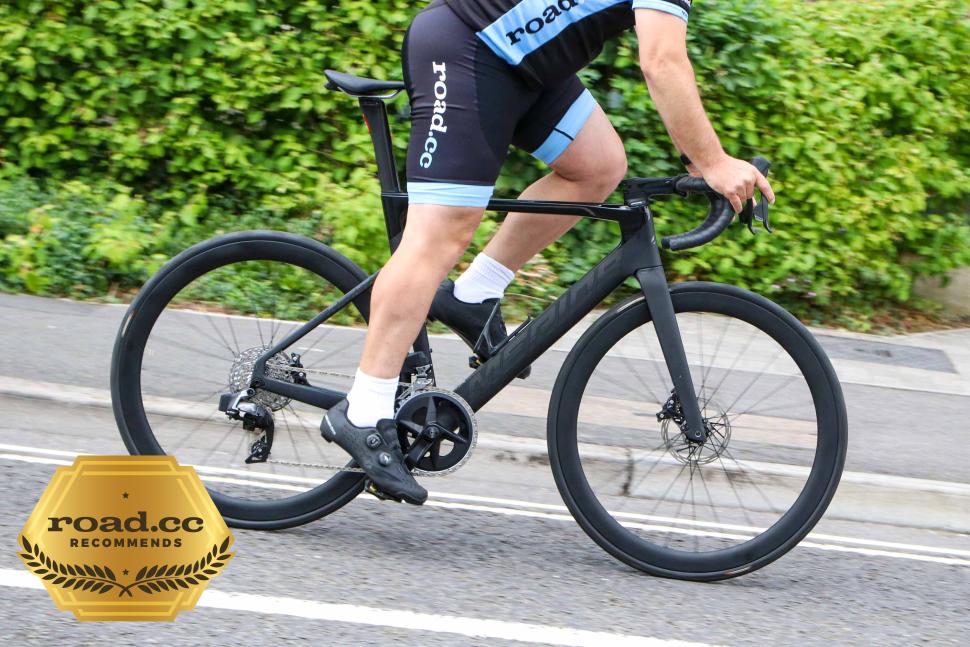 Merida Reacto 7000
Merida Reacto 7000£4,350.00
VERDICT:
Real-world aero benefits, a great ride quality and a respectable price
Effective 'aeroness' in the real world
Efficient gear ratios
Impressive tyres fitted as standard
Not the lightest build for the money
Weight:
8,850g
Contact:

This product has been selected to feature in road.cc recommends. That means it's not just scored well, but we think it stands out as special. Go to road.cc recommends
At road.cc every product is thoroughly tested for as long as it takes to get a proper insight into how well it works. Our reviewers are experienced cyclists that we trust to be objective. While we strive to ensure that opinions expressed are backed up by facts, reviews are by their nature an informed opinion, not a definitive verdict. We don't intentionally try to break anything (except locks) but we do try to look for weak points in any design. The overall score is not just an average of the other scores: it reflects both a product's function and value – with value determined by how a product compares with items of similar spec, quality, and price.
What the road.cc scores meanGood scores are more common than bad, because fortunately good products are more common than bad.
- Exceptional
- Excellent
- Very Good
- Good
- Quite good
- Average
- Not so good
- Poor
- Bad
- Appalling
The Merida Reacto 7000 feels exceptionally fast – which is exactly how an aero bike should feel. It comes with a SRAM Rival wireless electronic groupset, deep-section carbon wheels and high-quality finishing kit, which also makes it a very good value super bike.
Our best road bikes buyer's guide rounds up our top choices from a modest £300 to a most immodest 13 grand-plus.
Ride
When it comes to aero bikes, the big-name bike manufacturers pretty much without exception bandy about claims with wind tunnel this, yaw angle that – and Merida isn't exempt from this when talking about its Reacto.
Using the 'moving leg dummy' test the Reacto needs 209 watts effort for 45 km/h speed, which is a whole 1 watt better than its predecessor. This apparently puts it in the leading group of aero road bikes according to the German magazine Tour, which tested different bikes using the same setup.
Okay, so it's aero, which is all well and good – but how does it feel in the real world?
Fast, very fast indeed is the answer. It's one of those bikes that once you get it up and rolling it just wants to keep accelerating and once you are up around 20mph it seems to require less input to keep it there than a road bike with more traditional frame tube profiles.
Okay, so the deep-section wheels will be contributing significantly to the bike's overall performance, but you can definitely feel some input from the frame and fork too.
On long, flat sections of road the Reacto flies along and you can cover a lot of miles very quickly and very efficiently, helped by the SRAM Rival gear ratios, but more about that in a bit.
I've no criticisms when it comes to the Reacto's stiffness. Its chunky tube profiles mean that flex really isn't an issue, so it's easy to keep your speed from the flat when you hit short, sharp climbs or dig in for a little sprint.
At 8.85kg for a bike of this price it's not exactly light, so it's not exactly a whippet when you hit the climbs – though the groupset's low-ratio gears do bail you out when the going gets really steep.
The Reacto's geometry shows that it's very much aimed at the performance end of the road market. Its 73.5° head angle delivers quick handling, it feels very precise at speed and is absolutely bang on when you push it through the apex of a bend, the slightest shift in your body weight changing your line in an instant.
This medium model has a 560mm top tube and a wheelbase of just 990mm, so that it feels nimble and handles direction changes very quickly. Technical descents aren't a challenge either, as the Merida tracks extremely impressively.
As with most aero road bikes comfort is something of a secondary consideration. It's not that the Reacto's harsh or uncomfortable, but it has a firm, or rather, purposeful, ride quality. The Reacto comes with 25mm tyres but it will take rubber up to 30mm wide, so you can pump up the plushness if you desire.
> Lightweight v aero: Which is best?
From a riding point of view, the Reacto delivers the speed and has the handling to go with it, which means it's ideal for fast solo rides, chain gangs or even competitive outings. As I've said, it's not that light, but we know that aero trumps weight, and you're not going to be buying this Merida for its prowess in the mountains.
Frame and fork
Merida grades its frames in terms of the carbon fibre used in their construction, with the top-end Reactos getting CF5 carbon and our Reacto 7000 getting CF3, which is slightly heavier but the frames have the same geometry and design.
This is the fourth-generation model, and following recent design trends this comes with greater tyre clearance than its predecessor and the cable routing is now funnelled in through the headset and head tube for a neater, more aero solution.
It's a smart-looking bike, in my eyes at least, with every tube flowing into the next, and even the fork tucks neatly into the head and down tube junction.
The seatstays sit low for an aero benefit.
The seat clamp is completely hidden in the frame.
The frame also focuses on stiffness and power transfer too, thanks to its large diameter down tube, the bottom bracket junction designed to accept the BB86 press fit design and massive chainstays to keep the rear wheel planted when you are hammering the pedals.
As a bike with racing ambitions, the only mounts you get are two pairs of water bottle bosses.
When it comes to sizing the Merida is available in six sizes from XXS to XL, with top tube lengths from 520mm to 590mm.
The medium we have has stack and reach figures of 395mm and 557mm, a wheelbase of 990mm and relatively short chainstays of just 408mm.
The head tube is 140mm, the seat tube 540mm and both the head and seat tube angles are an aggressive 73.5° degrees.
Finishing Kit
This 7000 build comes with a Rival eTap groupset, which is SRAM's entry-level electronic wireless groupset.
But don't be fooled by its entry-level status. Mat found that Rival worked very well indeed, and there are actually only minor changes compared with SRAM's higher-end groupsets, for example it features aluminium cranks rather than carbon fibre.
The big difference between SRAM's eTap groupsets and most of Shimano and Campagnolo's offering is that SRAM's chainrings are much smaller.
The Reacto gets a 48/35T pairing rather than the 50/34 or 52/36 you'd see on the equivalent 105 Di2 chainset.
To offset this SRAM's cassette runs from 10 to 36 teeth, which gives a good spread as well as a low bottom gear and a high top gear. I spend a lot more time riding in the big ring than I do when using other manufacturers' setups, which I find to be more efficient as well as suiting my cadence and pedalling style.
The only potential downside is that a wider-ranging cassette will have bigger jumps between sprockets, though as this is really only on the gears you'd use for climbing, I don't feel it's a major issue as it's only really on the gears used for climbing.
The battery life is very good, so you won't need to change them very often, and when you do the batteries don't take long to top up. The shifters use coin cell batteries that are easy to change.
The braking from SRAM's hydraulic setup and 160mm rotors is powerful and well-modulated, offering all the stopping power you need with little chance of locking up.
The cockpit uses FSA's ACR stem, which allows the hydraulic brake hoses to pass from the bar into the frame.
The own-brand alloy bar has a shallow drop that should make all parts of the bar accessible for most of us.
The Merida Team CW carbon seatpost comes with an integrated rear light – a cool touch.
It's Merida for the saddle too, in the form of its Expert SL that has a slender racy shape to it, and I found it very comfortable.
The wheels are Merida-branded SL45s with 45mm deep-section carbon rims and 24 spokes front and rear.
It's a quality aero wheelset that remained true throughout testing.
The Continental GP5000 tyres are some of the best current road tyres on the market in terms of performance and grip.
Bike companies often sacrifice quality tyres when speccing road bikes, so it's impressive to see top-end rubber straight out of the factory.
Value
The Reacto 7000's £4,350 price makes it a lot cheaper than the £5,499 aero Giant Propel Advanced Pro 1 that Mat tested recently. The Giant's a few hundred grams lighter and comes with the same finishing kit level as the Merida.
I rated the Orro Venturi STC Force eTap Tailor Made, which is a similar bike to the Reacto. The Venturi is also available for £4,599.99 with SRAM Rival eTap and deep-section wheels, but it's the Tailor Made Orro Venturi STC SRAM Force eTap model that includes an upgrade to a BLK TEC carbon fibre handlebar and stem for a little bit of extra bling.
Canyon's Aeroad CF SLX 7 also comes with an eTap Rival groupset and costs £4,799, but in addition to that it gets a swanky set of DT Swiss carbon wheels and a carbon cockpit.
Conclusion
The Reacto 7000 is a high-performance bike that certainly highlights its aero design cues when you ask it to get a shift on, and the high level of stiffness means that it performs when you get out of the saddle too. It's a very capable race bike that also does well on price.
Verdict
Real-world aero benefits, a great ride quality and a respectable price
road.cc test report
Make and model: Merida Reacto 7000
Size tested: Medium, 56cm
About the bike
List the components used to build up the bike.
WHEELSET: MERIDA TEAM SL45
FRONT TYRE: Continental Grand Prix 5000
REAR TYRE: Continental Grand Prix 5000
HUBS: MERIDA EXPERT SL
CRANK: SRAM Rival eTap AXS
BOTTOM BRACKET: SRAM Pressfit Dub, Pressfit 86.5
CASSETTE: CS XG 1250 D1
CHAIN: SRAM Rival 12s
SHIFTERS: SRAM Rival eTAP AXS HRD
FRONT DERAILLEUR: SRAM Rival eTap AXS
REAR DERAILLEUR: Sram Rival eTap AXS
BRAKE LEVER: SRAM ED Rival eTap AXS
BRAKES: SRAM ED Rival eTap AXS
ROTORS: SRAM DB Rotor Centerlock Paceline
HEADSET: FSA ACR
STEM: FSA SMR ACR
STEM SIZE: 90 mm-XXS/XS, 100 mm-S, 110 mm-M, 120 mm-L/XL
HANDLEBAR: MERIDA EXPERT CW
GRIP: MERIDA ROAD Expert
SEAT POST: MERIDA TEAM CW
SEAT CLAMP: MERIDA REACTO Aero
SADDLE: MERIDA EXPERT SL
LIGHTS: REACTO light seat post + Battery
Tell us what the bike is for and who it's aimed at. What do the manufacturers say about it? How does that compare to your own feelings about the bike?
Merida says: "The Merida Reacto has always been a class leading aero bike, combining state of the art aerodynamics with rider comfort.
The 4th generation model is more slippery and beautiful than ever, incorporating wider tyres, much neater cockpit cable integration and a series of incremental improvements to boost performance.
In the world of Pro-Tour racing no area can be ignored. Computational Fluid Dynamics (CFD) calculations were used to model performance in a virtual wind tunnel, guiding the changes which offered the most aerodynamic benefit:
Prototypes were wind tunnel tested following the German TOUR magazine standard, including the 'moving leg dummy' test. The Reacto CF5 needs just 209 watts effort for 45 km/h speed, 1 watt faster than its predecessor so it's in the leading group of aero road bikes ever tested by TOUR magazine.
Small details such as integrating the front disc cooler behind the fork and the rear disc caliper in the rear triangle and creating new bolt through axles with the thread integrated into the fork dropout minimise drag and improve aerodynamic performance.
A myriad of small improvements over-compensate for the aerodynamic compromises made to give the Reacto bigger tyres, resulting in the perfect package of comfort, aerodynamic, lightweight and style.
A long string of test wins, perfect scores and awards confirm the successful evolution of the race-proven DNA of the previous model with the latest trends and technologies. Cycling Weekly described it as 'without doubt one of the most complete bikes available on the market', Cyclingnews 'an utterly brilliant and faultless machine' and Cycling Plus were 'hugely impressed'.
All Reacto come with powerful hydraulic disc brakes. Calipers are mounted on the chainstay for better dissipation of braking forces using the flat mount standard for a neat, flush fit. Calipers sit on top of CNC'd aluminium Disc Cooler fins which reduce operating temperatures by up to 35%."
It certainly has the performance of a top aero bike and the ability to be able to take wider tyres is a bonus for comfort."
Where does this model sit in the range? Tell us briefly about the cheaper options and the more expensive options
There are eight bikes in the line-up with the 7000 third from the top. The range starts at £2,400 for the Shimano 105-equipped model and tops out at £8,500 (not that high these days!) with the Reacto Team, which has Shimano Dura-Ace Di2 with power meter, Vision Metron carbon wheels and Conti GP5000 tyres.
Frame and fork
Overall rating for frame and fork
8/10
Tell us about the build quality and finish of the frame and fork?
The build quality seems to be finished to a high level and the mix of gloss and matt paint gives a high-end finish.
Tell us about the materials used in the frame and fork?
Both the frame and fork are constructed from carbon fibre.
Tell us about the geometry of the frame and fork?
As you'd expect, the geometry is typically race biased, with steep angles at the front to improve steering speed.
How was the bike in terms of height and reach? How did it compare to other bikes of the same stated size?
The stack and reach figures are typical, with nothing out of the ordinary here.
Riding the bike
Was the bike comfortable to ride? Tell us how you felt about the ride quality.
Overall comfort is decent for this kind of bike. Aero road bikes tend to have large profile tubing, which gives them a firmer ride than a bike with round-profile tubes.
Did the bike feel stiff in the right places? Did any part of the bike feel too stiff or too flexible?
Stiffness levels are very high indeed.
How did the bike transfer power? Did it feel efficient?
Efficiency is very good thanks to excellent stiffness where it is required.
Was there any toe-clip overlap with the front wheel? If so was it a problem?
No
How would you describe the steering? Was it lively neutral or unresponsive? Lively
Tell us some more about the handling. How did the bike feel overall? Did it do particular things well or badly?
The handling is quick without being overly twitchy, which makes it ideal for riding hard and fast.
Which components had the most effect (good or bad) on the bike's comfort? would you recommend any changes?
I got on well with the shape of the Merida saddle and the shallow drop handlebar allows you to get into an aero position without the need to be hugely flexible.
Which components had the most effect (good or bad) on the bike's stiffness? would you recommend any changes?
Merida's wheels are impressively stiff, which helps you during hard out-of-the-saddle efforts.
Which components had the most effect (good or bad) on the bike's efficiency? would you recommend any changes?
The chainring sizes makes the bike very efficient as you rarely need to switch from the large to the small chainring.
Rate the bike for efficiency of power transfer:
8/10
Rate the bike for acceleration:
7/10
Rate the bike for sprinting:
8/10
Rate the bike for high speed stability:
9/10
Rate the bike for cruising speed stability:
8/10
Rate the bike for low speed stability:
8/10
Rate the bike for flat cornering:
8/10
Rate the bike for cornering on descents:
8/10
Rate the bike for climbing:
7/10
The drivetrain
Rate the drivetrain for performance:
9/10
Rate the drivetrain for durability:
8/10
Rate the drivetrain for weight:
7/10
Tell us some more about the drivetrain. Anything you particularly did or didn't like? Any components which didn't work well together?
A solid groupset that brings the performance and easy shifting of SRAM's higher-end groupsets at a much lower price.
Wheels and tyres
Rate the wheels for performance:
8/10
Rate the wheels for durability:
8/10
Rate the wheels for weight:
8/10
Rate the wheels for comfort:
7/10
Tell us some more about the wheels.Did they work well in the conditions you encountered? Would you change the wheels? If so what for?
A set of wheels that performed well throughout testing giving an aero boost while also remaining durable.
Rate the tyres for performance:
9/10
Rate the tyres for durability:
8/10
Rate the tyres for weight:
8/10
Rate the tyres for comfort:
8/10
Tell us some more about the tyres. Did they work well in the conditions you encountered? Would you change the tyres? If so what for?
A very good set of tyres to find as standard. One of the grippest and easiest rolling tyres on the market, although they won't be cheap to replace.
Controls
Rate the controls for performance:
8/10
Rate the controls for durability:
8/10
Rate the controls for weight:
7/10
Rate the controls for comfort:
8/10
Tell us some more about the controls. Any particularly good or bad components? How would the controls work for larger or smaller riders?
Good quality finishing kit with the majority from Merida itself, which helps to keep the overall price down.
Your summary
Did you enjoy riding the bike? Yes
Would you consider buying the bike? Yes
Would you recommend the bike to a friend? Yes
How does the price compare to that of similar bikes in the market, including ones recently tested on road.cc?
It is well priced against the a lot of the competition, especially the Giant mentioned in the review. Canyon and Orro offer models are a bit closer in price to the Reacto, but both bikes also get upgrades like DT Swiss wheels or carbon fibre cockpits.
Rate the bike overall for performance:
8/10
Rate the bike overall for value:
5/10
Use this box to explain your overall score
An aero bike that works very well in the real world and comes with a great spec list for the money.
About the tester
Age: 44
I usually ride: This month's test bike My best bike is: B'Twin Ultra CF draped in the latest bling test components
I've been riding for: Over 20 years I ride: Every day I would class myself as: Expert
I regularly do the following types of riding: time trialling, commuting, club rides, sportives, fixed/singlespeed,
Since writing his first bike review for road.cc back in early 2009 senior product reviewer Stu has tested more than a thousand pieces of kit, and hundreds of bikes.
With an HND in mechanical engineering and previous roles as a CNC programmer/machinist, draughtsman and development engineer (working in new product design) Stu understands what it takes to bring a product to market. A mix of that knowledge combined with his love of road and gravel cycling puts him in the ideal position to put the latest kit through its paces.
He first made the switch to road cycling in 1999, primarily for fitness, but it didn’t take long for his competitive side to take over which led to around ten years as a time triallist and some pretty decent results. These days though riding is more about escapism, keeping the weight off and just enjoying the fact that he gets to ride the latest technology as part of his day job.
Latest Comments
- Rendel Harris 26 min 52 sec ago
Don't be daft sir, it's not the twelfth of never yet!
- Rendel Harris 27 min 38 sec ago
Yes, I felt it lived down to the expectations the description had provided.
- momove 1 hour 15 min ago
To be fair, if I had that photo I'd be posting it everywhere too.
- Steve K 1 hour 32 min ago
A friend of mine had several high end bikes nicked from his garage. The thieves thought they had removed the airtags but missed one. As a result...
- Rendel Harris 1 hour 38 min ago
People aren't talking about whether they could make hundreds of thousands of profit (which it has yet to be seen whether this does) but, quite...
- David9694 2 hours 34 min ago
"A person was taken to hospital after a car crashed into a wall in the early hours..."
- David9694 4 hours 1 min ago
"Ah well, it was just an accident" seems to have become one of the most important ideas in the active travel campaigner's world. I guess the ...
- whosatthewheel 5 hours 55 min ago
He won't be "jailed" for life as it will not be a "whole life" sentence. He's 22 now, so may be out as early as when he is 37 as the minimum "jail"...
- BigSigh 15 hours 12 min ago
I am absolutely certain that it's not fair for trans-identifying males who went through male puberty to compete in female sports... and that should...








































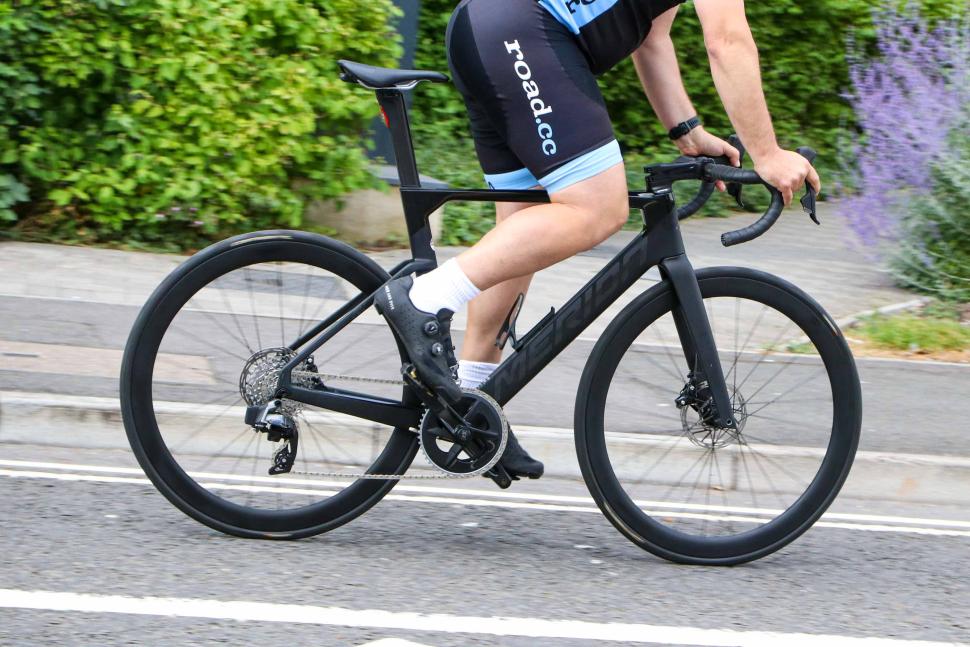
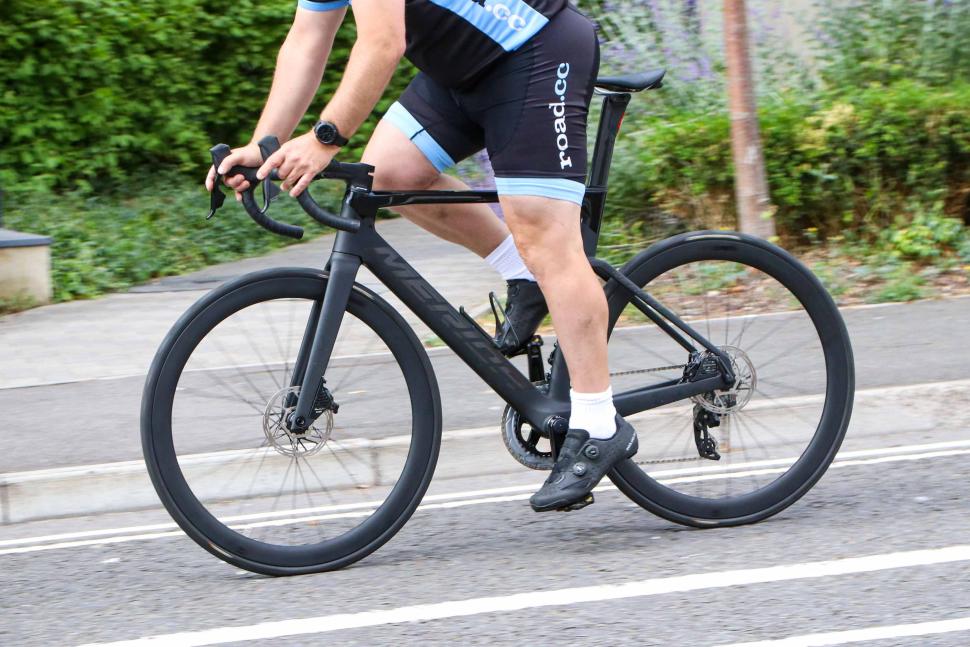

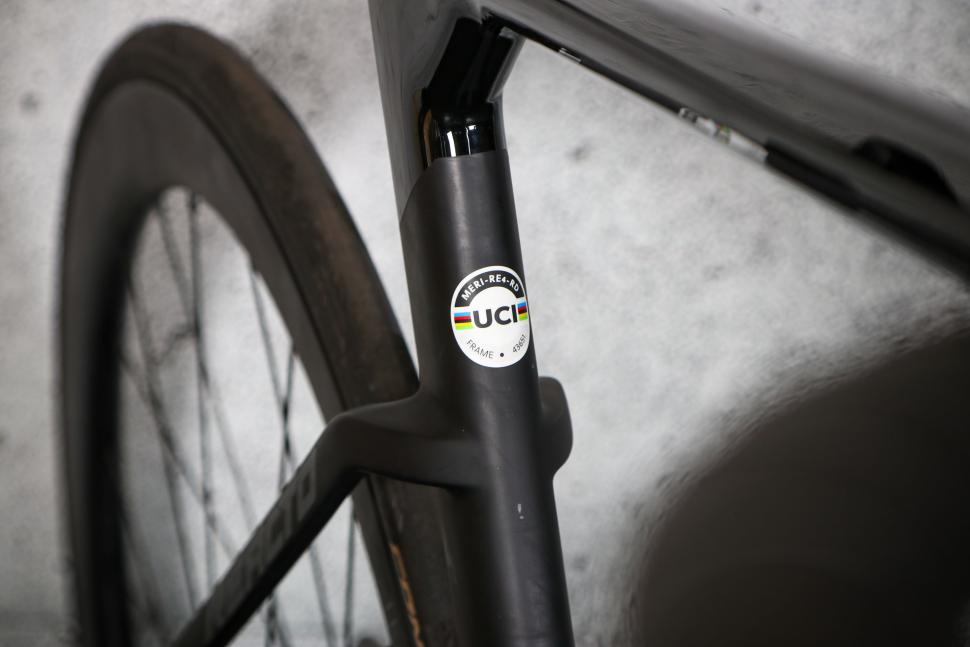




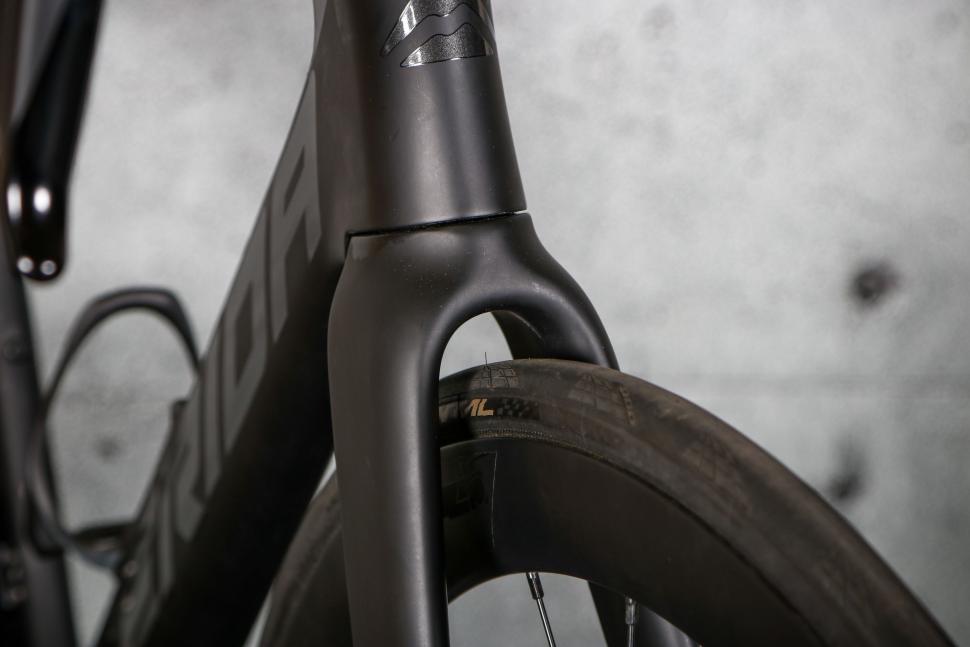



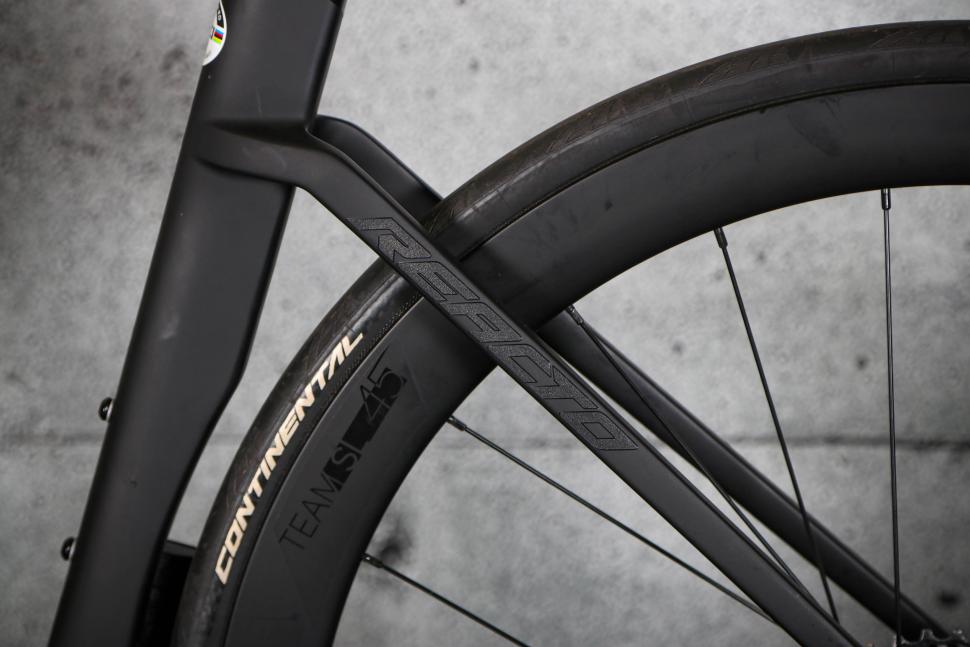
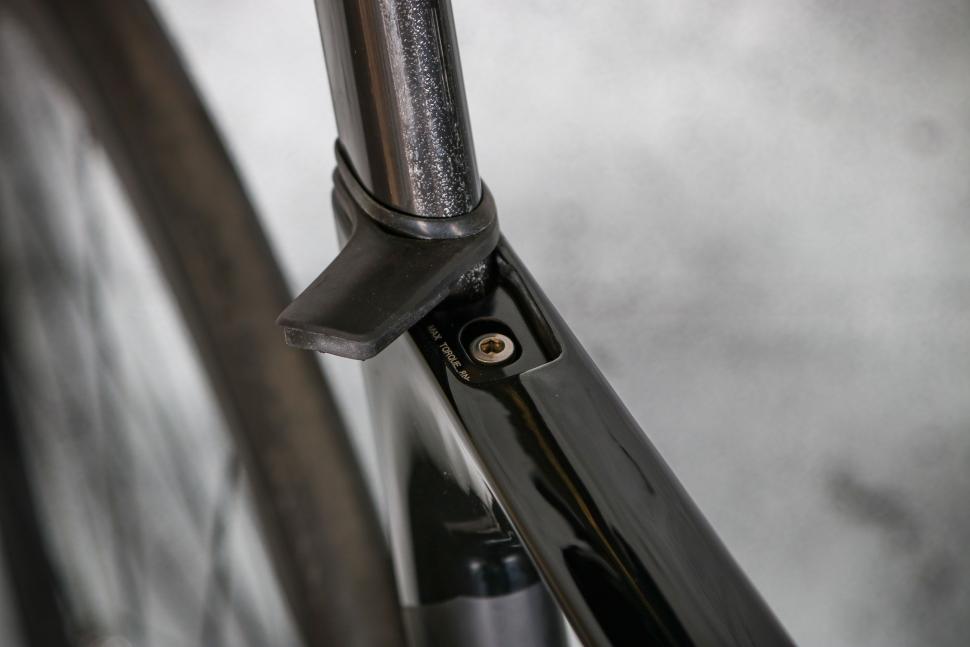

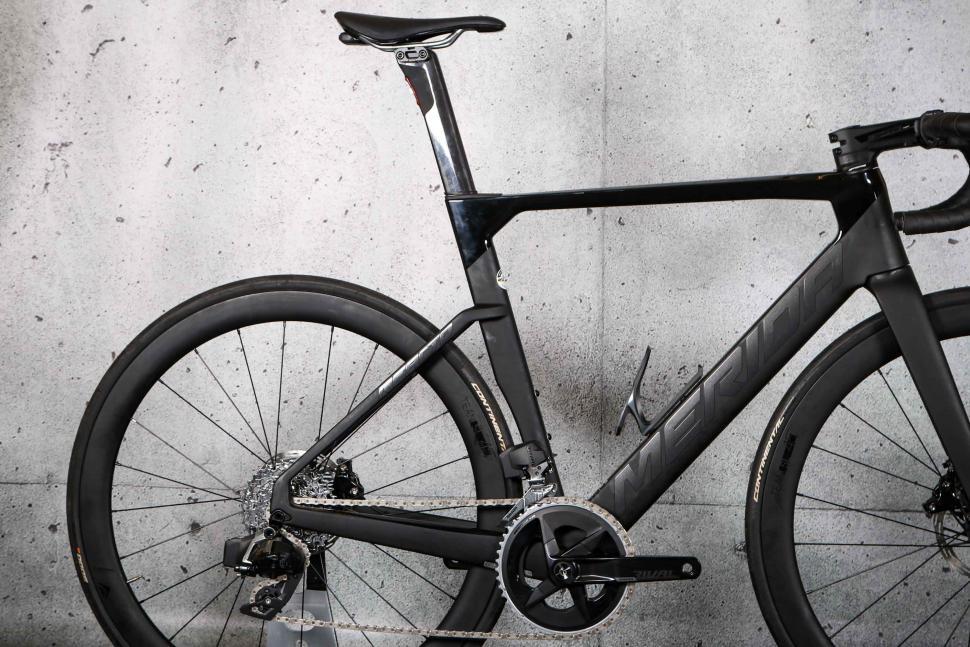




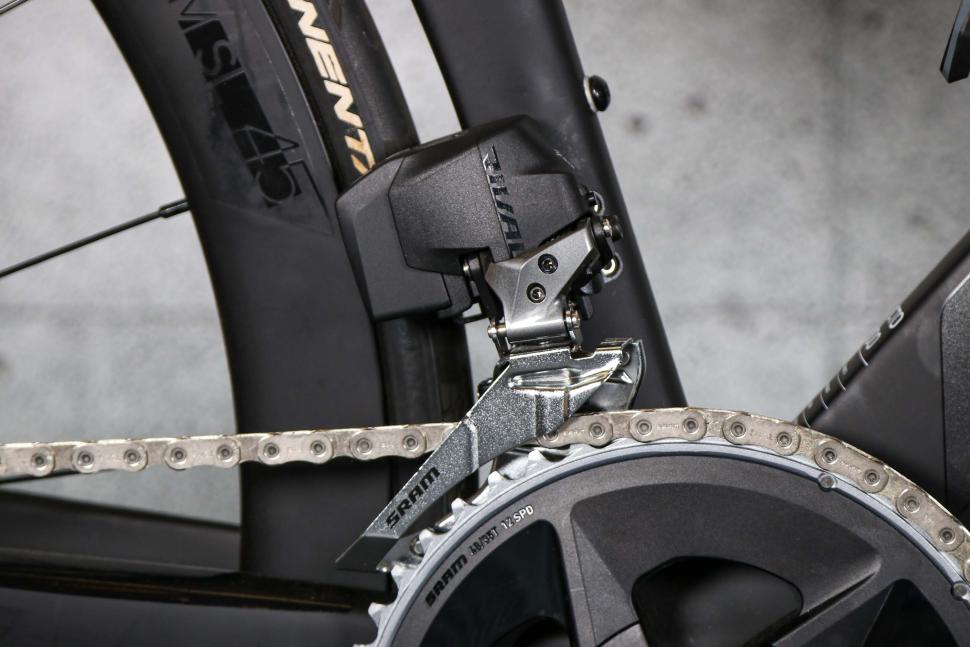


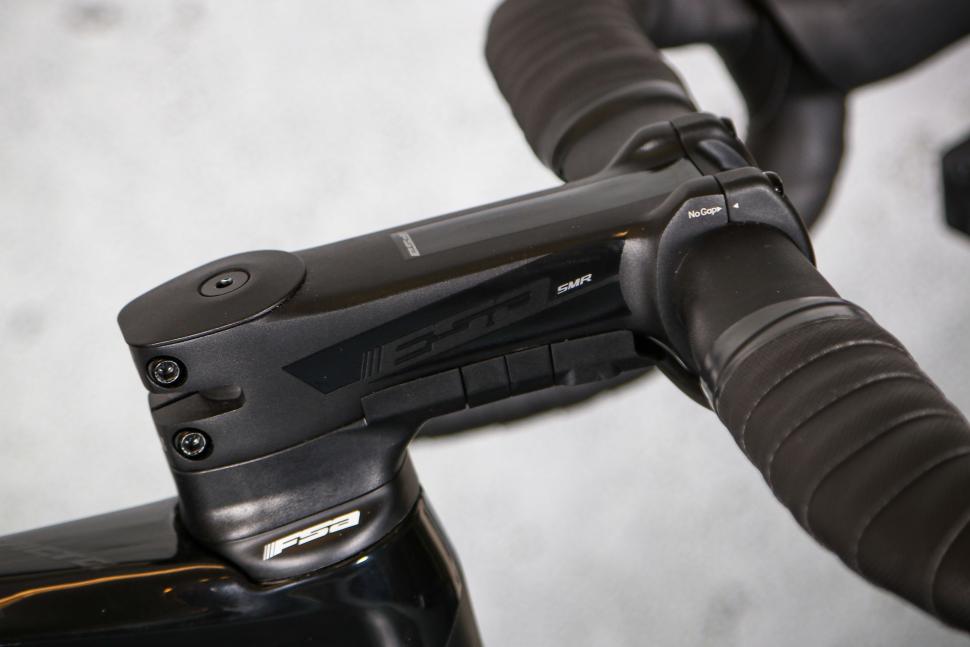
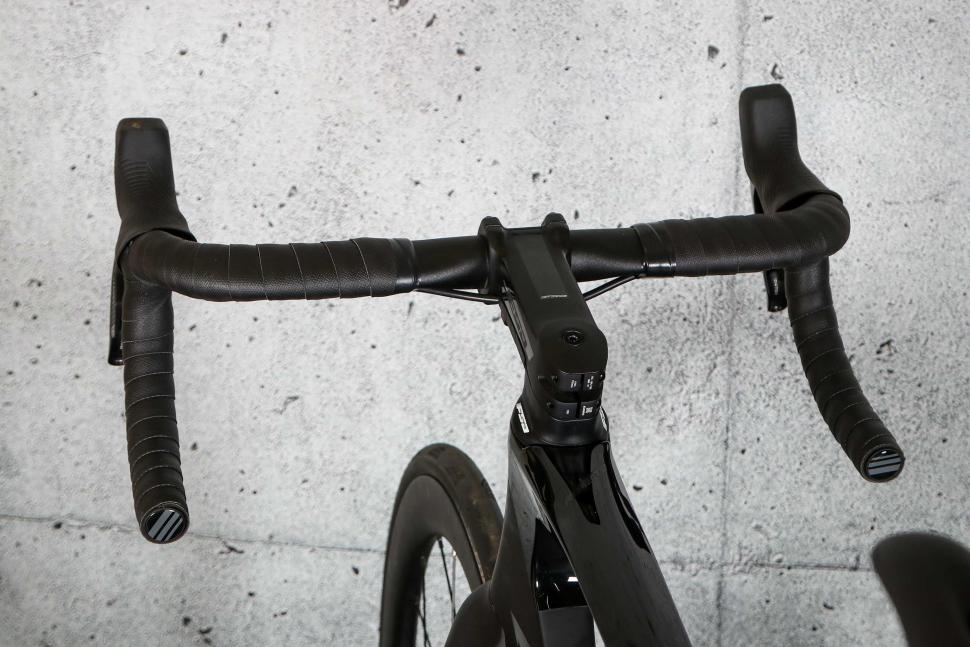







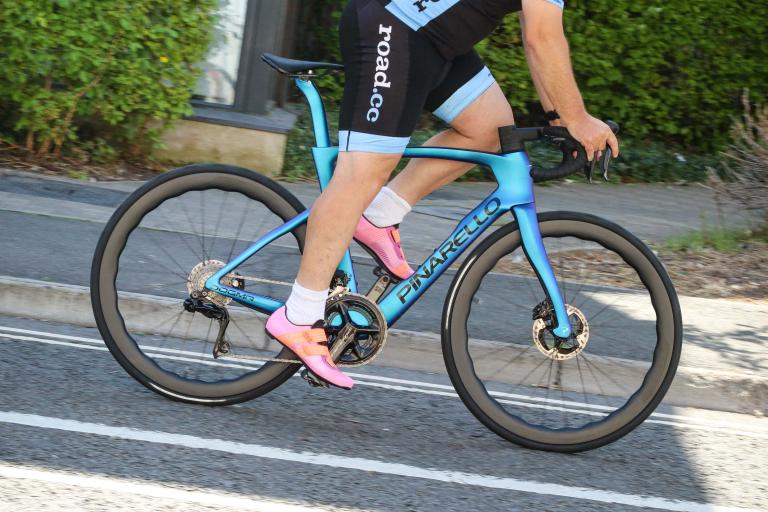
Add new comment
13 comments
Say what now? A 70 kg rider needs to put out between 400-450 W to achieve 45 km/h, depending on their chosen bar position. Hopefully a typo either in the wattage number or the speed number rather than yet another ludicrous claim from a manufacturer.
I think you're forgetting that the bike in question is 1 watt faster--1 whole watt!--than the previous version. That must explain it.
Don't know where the truth lies, but the claims are consistent with what Merida was claiming for the Scultura in a review I just chanced upon, which suggests not a typo:
"Aerodynamic-wise, at 45kph the previous Scultura required 234.3 watts, but cleaning up the front end, as in hiding all of the cables/hoses, using the integrated cockpit, hiding the seat clamp and dropping the seatstays lower where they meet the seat tube, equates to a wattage saving of 4.2%, 224.5 watts at 45kph"
You don't need 400-450W to ride at 45kph unless you're sitting bolt upright with flappy clothing. Real world data: a clubmate yesterday in a 10 mile circuit TT on a road bike put out 326W for a 42kph average.
Yep fair enough a small rider (what does your clubmate weigh? Fairly light I'd guess?) with a good tuck and clothing can cut off masses but I defy the lightest rider in the best skinsuit, aero helmet and positioning available to get 45kmh on the dial for 209 watts.
Agreed, I averaged 33km/h at 202W at the (pan flat) Goodwood circuit on a bike not dissimilar to this Reacto (2020 Venge) and I don't think losing 15kg in weight, 10cm in height and a skinsuit would've got me over 40km/h.
No, you can't. What justifiable claim could you even possibly be making there? Please just stop.
Who needs expensive wind tunnel testing? Just put some cycling journalists on the job!
So rounding things up, nearly 4 and a half grand for a 9kg bike. Wow, really making progress with these modern offerings. I get the impression that the sweet spot for buying a decent bike was about 4-5 years ago when something with 'some' aero benefits and weighing just over 7kg could be had for about 3 grand. Admittedly, they didn't come with aero sniffers and the like, but I think I can live without that BS.
The point is you'll go faster with an aero 9kg bike than a non-aero 7kg bike, unless you live in the Alps. So weight doesnt really come into it, you've fallen for weight as a marketing ploy.
Plus you can instantly drop most of a kg by opting for mechanical and probably some to be gained by buying a model with standard wheels and going aftermarket.
You arent comparing like for like.
Assuming you want to go fast - if you're buying with your head Aero wins. If you are buying with heart & feel/showing your mates how light it is at the cafe stop weight wins.
Not that much, surely? I don't know the figures for Rival but for Force I believe the e-Tap version is only 400g heavier than the mechanical.
Fair enough. 500g for 105 R7000 (11sp) vs 105 di2
I rode a Reacto hire bike a few years back in Lanzarote. It was proper fast. And up the 1.8 mile climb of about 450 feet out of town (including downhill section) I beat my previous best time several times (I've been quite a lot over the years!).
While that may well true, the feeling of a very light bike is a wonderful feeling for many people, and they would trade a handful of aero watts for a bike that dances underneath them when they get out of the saddle.